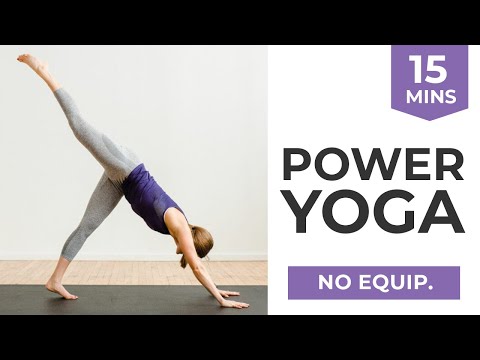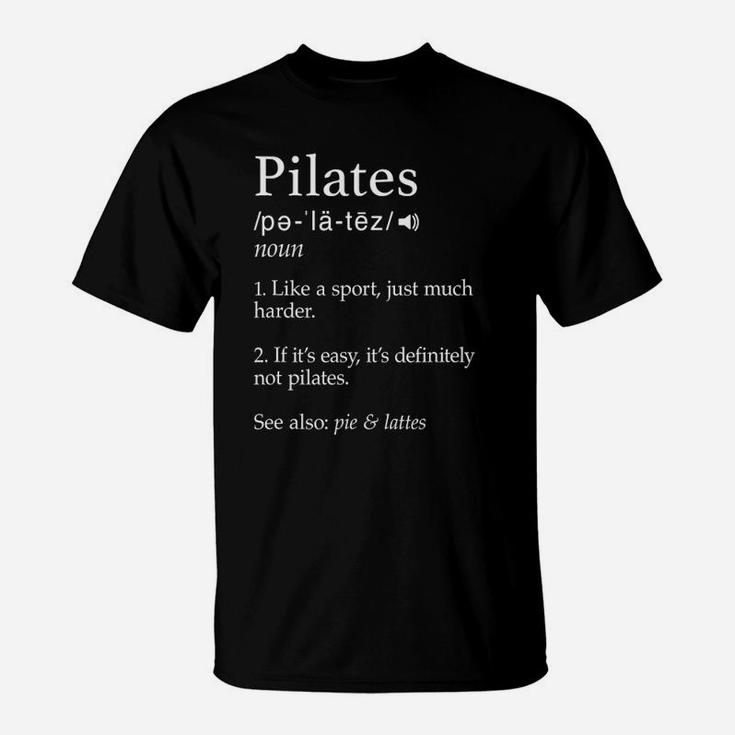
Knee pain can be a problem when you do yoga. Although it may seem counterintuitive, it could be the right therapy for you. Outside Learn, an online education platform that offers comprehensive courses in nutrition, fitness, and yoga, has more information about yoga for knee pain. Click on the links to find the right class for you. You can find a class to suit your schedule and level.
The butterfly pose, which is one of the most common yoga knee pain exercises, is very popular. The butterfly pose, which is a seated position, requires that the soles of your feet are together and the knees are bent wide. This exercise is beneficial for groin and hip flexors, without placing excessive strain on the knees. You can choose to do this exercise with straight or slightly bent legs in order to avoid further straining your knees. If you feel discomfort, switch sides to prevent straining your knees.

To make a yoga session safe for your knees, you need to micro-bend your knee. This position prevents hyperextension and stimulates the muscles around your knee. It also increases strength and flexibility. Lunges can be a good yoga posture for knee pain. However, it is important to be gentle and allow your body to adjust. Yoga is not an instant fix. But it can help to reduce the pain and maintain your joints.
The best pose to do if you have knee pain is the kneeling position. This can be done with towels, blankets or folded blankets. Holding this position, you should pull your calf muscles up and place your hips under your ankles. Pull your buttocks flesh forward and up on your knees while you are in this position. Hold this position for five to 8 breaths. If you are able, you can hold this position for longer.
A knee-healing stretch is one of most effective ways to stretch your knees. It can place a lot on the knees and strain ligaments. If you have joint pain or sensitive knees, this pose should be avoided. For a diagnosis and treatment, see your doctor if there has been an injury. When it comes to your knee, it's important to learn about yoga to strengthen your body and relieve your pain.

Some types of yoga may cause knee pain. You should avoid placing pressure on your knees by avoiding asanas. However, you can modify these poses in order to reduce pressure on your knees. A yoga block can be used to relieve pressure and pain from your knee. Blocks can be used to help maintain balance while you are in a pose. It can also be helpful to modify certain asanas if you have a knee injury. To prevent any kind of discomfort from occurring during yoga, contact a medical professional immediately.
FAQ
Do I need to exercise every morning?
No! You should do at least 30 mins of moderate-intensity activity 5 days per week. This means that you should be able to walk fast enough to feel slightly out of breath, or bike hard enough to sweat.
What's a good routine for a daily workout?
Regular exercise is key to staying healthy. You don't have to do the same type of exercise every day, it doesn't really matter. The most important thing is consistency. For you to get results, you have to stick with it for a longer period of time.
Start by doing small amounts of daily physical activity (like walking). Then gradually increase the time spent exercising until you spend 30 minutes a day working out. You can choose to run, swim, weight train, do yoga or take aerobics classes.
Try to make sure you exercise on all days of the week. If you have a reason to miss a session, don't skim it.
Make sure to wear appropriate clothing and footwear for outdoor exercise. You should also consider the weather conditions that could affect your ability exercise safely.
When you exercise, make sure you are drinking plenty of water. It is best to avoid alcohol while you're exercising. Also, don't drink caffeine-rich beverages like tea, coffee, or cola. They can provide energy, but they also dehydrate.
After your first exercise, you may feel tired. However, if you continue with your program, you'll soon feel more energetic and refreshed.
What does the milk do for men
When you next buy milk, think of other uses. It might also help if you start drinking less coffee.
The benefits of milk have been demonstrated to be both beneficial to children and adults. Milk provides children with nutrients such as vitamin D, calcium, potassium, phosphorous, and magnesium.
It aids in digestion, strengthens bones, and promotes weight loss. The immune system is stronger and there are fewer illnesses in adults who consume dairy products.
Milk is also rich in lactose, so people who cannot digest this sugar easily can enjoy its benefits without experiencing stomach problems.
You can drink more milk than you would soda or juice. The extra calcium and vitamin D found in milk can help strengthen your teeth and bones.
Plain low-fat yogurt is another option if milk tastes bland to you. Yogurt is a great alternative to milk since it is lower in calories and higher in protein.
Probiotics are also found in yogurt, which help with digestion and boost immunity.
A glass of warm milk is a great way to get a good night's sleep if you're having trouble getting to sleep. Warm milk relaxes the muscles and increases serotonin levels. It will give you a restful night.
Is Cardio Better Than Strength Training?
Both are equally great. If you want to increase muscle mass faster, cardio is the better option.
Cardio burns far more calories per min than strength training. It also burns fat more efficiently.
Strength training helps build muscle mass. But it takes longer than cardio to accomplish this goal.
Do Men Need A Gym Membership?
A gym membership does not have to be required for men. You will get more value for your money if you join the gym.
Many gyms offer free trial memberships that allow you to test the facilities before signing up for any monthly fees.
You can use the gym at any time you want, and it doesn't cost anything. Your membership can be cancelled at any time you choose to love it or not.
Statistics
- 10 pounds in a month is likely during a lean bulking phase, especially for beginners. (muscleandstrength.com)
- An estimated calorie range for moderately active adult males falls between 2,200 to 2,800 calories per day, depending on age. (eatright.org)
- Cardmembers earn 5% Back at Amazon.com with a Prime Credit Card. (amazon.com)
- By John Thompson Take a whopping 38% off a set of PowerBlock Pros. (menshealth.com)
- Get free shipping and 25% off today. (healthline.com)
External Links
How To
What nutrients does a man need daily?
Daily nutrition is essential for men's healthy growth. Vitamins, minerals, vitamins, nutrients, carbohydrates, fats and fiber are all essential for the body.
The male body also requires specific nutrients at different times throughout the day. When you're sleeping, your body uses energy from food for hormones, proteins, and enzymes. You use protein to build muscles and repair damaged tissue when you wake up.
Your body stores extra energy as glycogen and breaks down fat at night. During this time, your body needs fewer calories but still needs sufficient nutrients. If you feel hungry, you can have a snack in the evening.
To fuel your muscles while you train, you will need sufficient carbs as well as protein. If you exercise hard, you might feel muscle soreness.
To prevent this, you must consume carbs and protein within 2 hours of training. Your body will use stored glycogen to produce glucose for energy.
In addition, you must consume protein immediately after completing your workouts. This prevents the breakdown of muscle tissue that occurs while you sleep.
During periods of intense physical activity, your body produces lactic acid. It builds up in your bloodstream, which can lead to fatigue. To avoid this, you should eat foods rich in carbohydrates, such as fruits and vegetables.
Carbohydrates give your body the energy it needs to recover from strenuous exercise.
You may also want to include lean meats and fish, as well as yogurt, cheese, yogurt, beans and nuts in your diet.
All these foods are high-quality sources of protein. Protein promotes muscle growth, and helps repair damaged tissues. Protein provides the amino acid your body needs for testosterone and sexhormone production.
You also need enough dietary fats to maintain good skin, hair, nails, and joints. Healthy men need between 20% - 35% of the total caloric intake to be fat.
Fat protects your heart from cancer and keeps it strong. It keeps your brain healthy and functioning well.
You can get most of the fat you need from vegetable oils like olive oil, sunflower oil, corn oil, soybean oil, peanut oil, and safflower oil.
These oils are high-in monounsaturated, unsaturated fatty acid (MUFAs). MUFAs are good for lowering cholesterol and reducing inflammation. They protect cells against damage from free radicals.
Saturated Fats (SFAs), which are mostly found in animal products like meat, butter, and dairy products, include LDL ("bad") cholesterol. SFAs are known to raise LDL ("bad") cholesterol and raise triglycerides. They can also increase weight and reduce belly fat.
Plant-based oils such as vegetable oil, nuts, seeds, or grains are rich in polyunsaturated fats (PUFAs). PUFAs are good for your heart health and help to reduce inflammation. They are also good for controlling blood sugar and cholesterol.
Men with low HDL ("good") cholesterol often suffer from erectile dysfunction. The consumption of saturated fats raises bad cholesterol which in turn lowers good cholesterol.
Men who eat large quantities of red meats or pork may develop prostate problems. When cooked at high temperatures, nitrates can be converted to nitrosamines. These compounds can cause lung cancer.
Many processed meats are high in nitrites, and other dangerous chemicals. These chemicals should be avoided.
The American Heart Association recommends limiting red meat intake to two meals per week. Instead, opt for poultry, fish, legumes and tofu as well as whole grains bread and cereals.